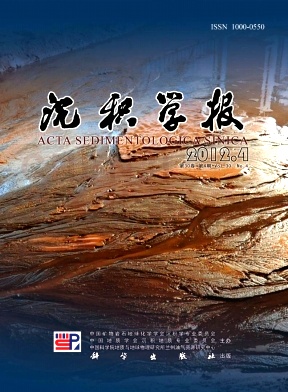Characteristics and Palaeoenvironmental Significances of ShallowMarine Sediments in the Latest Permian, Moyang Section, Guizhou
- Publish Date: 2012-08-10
-
Key words:
- South China /
- Changhsingian /
- erosional surface /
- palaeokarst /
- oolite
Abstract: The Moyang section located in the southern margin of the Great Bank of Guizhou developed typical deposits of shallowmarine environments in the Late Permian, including Changhsingian reefs, disconformity surfaces near the mass extinction horizon,and one probably kind of palaeokarst sediments. Calcareous algalsponge boundstone characterized by Archaeolithoporella, Tubiphytes and winded sponges, and early marine cements constitute the frameworks in the upper of the Changxing Formation. Disconformity surfaces (with the contacts between the lower and upper facies stylolitized or eroded) make a distinction between the latest Permian oolitic limestone and the Changhsingian skeletal packstonegrainstone containing the dominated fusulinids, sphinctozoan sponges, Tubiphytes and other types of calcareous algae. In some outcrops, one special kind of breccias found in the upper part of the Changxing Formation, which overlain or incised by giantooidbearing oolite directly in the topmost, comprises numerous clasts of bioclastic limestone, lime mudstone and silicate, with diverse and angular shapes. In addition, the presence of collapse structures and white cement layers consisting of coarse sparry calcite indicate the possible karstification. Based upon these features, we suggest the fall in relative sealevel of Moyang caused the subaerial exposure of the top of the Changhsingian complex in the latest Permian. Under meteoric vadose diagenesis, karstic processes formed collapse breccia, fissures, solution vugs and speleothem carbonate in the ridgy topography (with persisting growth of the bioreef). In contrast, erosional surfaces developing in nonridgy topography probably formed by the process of weathering, and reworking in ensuing rise of sealevel. Not like other sections growing microbialites after the event horizon, the Moyang section developed oolitic limestones bearing oncoids and giant ooids at that moment. This phenomenon implies an unusual phenomenon developing oolite facies overlying top of the Changhsingian bioclastic grainstone directly, and hence, has the significance of helping us understand the origin of the mass extinction and temporal oceanic conditions.
| Citation: | Characteristics and Palaeoenvironmental Significances of ShallowMarine Sediments in the Latest Permian, Moyang Section, Guizhou[J]. Acta Sedimentologica Sinica, 2012, 30(4): 679-688. |






 DownLoad:
DownLoad: